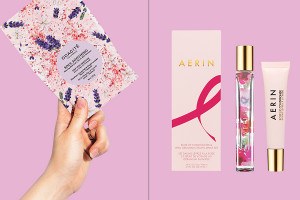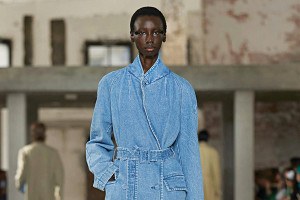What You Missed at the Sartorialist's Wellesley College Lecture
 (Scott Schuman / All photos by Fawn DeViney)
(Scott Schuman / All photos by Fawn DeViney)
Fashionistas flocked to Alumnae Hall Auditorium last night to hear the Sartorialist’s Scott Schuman talk about his blog, style, and art — after the Q&A many attendees teetered in high heels as they waited for Schuman to sign copies of his latest book, “Closer.” His visit was in conjunction with “A Generous Medium,” an exhibit exploring the history of photography at the on-campus Davis Museum (through Dec. 16).
Ahead, the takeaway from a very stylish night.
On the demands of blogging
“The tricky part about creating a blog, is that it’s such an everyday thing. I’m posting usually six days a week, and shooting as often as I can — almost every day. There’s a constant pull to create content. And the thing that you have to be very careful with is to feel the pressure but not to feel the pressure. To respect the audience and try to give them something every day, so they feel like they can come back and see something interesting, but not to give into the pressure to create something that you don’t feel strongly about, or that you don’t believe in just to put something up.”
On how the Sartorialist differs from other blogs
“A lot of people, mistakenly — I think mistakenly — think it’s because I was the first … I think it’s because I approached it a totally different way. If you watch the Bill Cunningham movie, he says it’s all about the clothes, and I think it very much is for him. For me, it was really about the appreciation of the arts of design and craft and how I relate to it. It’s always a very personal diary for me. If I do it right, it’s a personal diary.”
On learning to photograph by snapping his two daughters
“I never picked up a camera until I had my two little girls. And so, my eye has totally been trained in trying to capture the beauty in the most romantic, true way that I see it … And I shoot the exact same way, and with the same heart, when I’m shooting people as when I was learning to shoot my kids.”
On Anna Dello Russo
“She’s made it very clear that no one was shooting her before I did … She loves that she’s not a typical beauty but has become this modern style icon and not through the typical way, she was almost a Diana Vreeland in the sense that she was not a typical beauty but so charismatic. And she wan’t always the Anna Dello Russo that you see now. Very early on, she was much more quiet and closed off — that’s the thing I’m so proud of, that she’s grown into this. She was one of those editors who had been going to shows for years and liked to get dressed up but no one paid attention to her and she didn’t have a big name. But once I started taking her picture and other people started taking her picture, you could literally see her blossom in the photographs. You could see her gain confidence in herself and believe in herself and see the beauty that I saw in her and that others saw in her and the fascination that I saw in her and that others did.”
On his favorite subject
“The next young, cool girl I haven’t met yet who creates an interesting air of mystery.”
On shooting men
“In the photographs, if I’ve done a good job, there’s a gracefulness about them. But not a typical ballet gracefulness. Men can be very masculine, and very graceful in their strength. Even if they are clumsy, there is a masculinity that is beautiful about them, that they portray. If I’ve helped men in some way, it’s because I’ve been able to capture — and other people have been able to see — that there is a beauty in real mean. In a kind of serious, real guy way, as opposed to magazines that are filled with 20-year-old boys with no chests wearing $5,000 suits.”
On the art of street style photographs
“I don’t know if this is art, necessarily, but at least it’s art in the sense that it’s a true expression of a person who I met at that time and how I felt about them. I don’t think that’s really any different than how John Singer Sargent would do a painting — at least the ones that weren’t commissioned. It’s done with the same kind of idea.”
On approaching his subjects
“I’m not the biggest, scariest person in the world, so that helps. I don’t scare people when I stop them on the street. I’m human enough to understand body language and distance. I shoot so many different types of people, you have to see each one as a person or as a character type and try to communicate with them in a way that makes them comfortable. You have to approach an old woman in Milan differently than you approach a guy in New York.” (He also recommends chatting with a subject and showing her the first few photographs to help her relax — “I say we’re done, and they relax, and then I take a couple of quick shots — boom, boom.”)
And a few more photos of the event (note that the most prevalent accessory was the camera):





